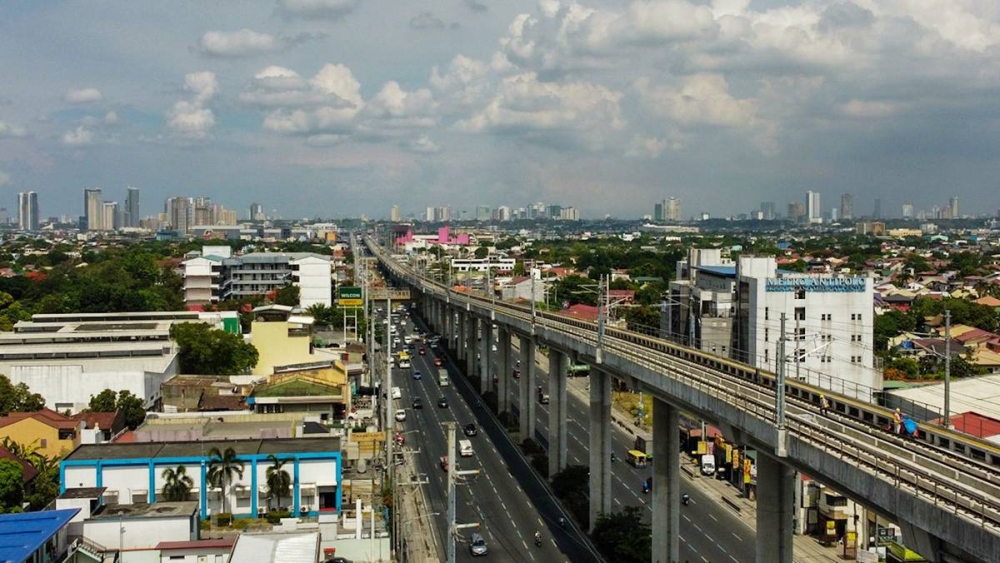Next administration must keep up railway development

A view of the newly built Light Rail Transit 2 extension connecting Marikina City and Antipolo City along Marcos Highway on May 22 2021. The P2.27-billion project to open on June 22 can accommodate an additional 80,000 passengers daily from Recto in Manila to Masinag in Antipolo where LRT 2 ends. PHOTO BY JOHN ORVEN VERDOTE
LAST week, Vivencio “Vince” Dizon, the presidential adviser on flagships projects and chief of the Bases Conversion and Development Authority (BCDA), provided a summary of the Duterte administration’s accomplishments in infrastructure development. Among the 119 “flagship projects” under the administration’s multiyear Build, Build, Build program are a number of rail transport developments.
Most of these have already been initiated, but a few will be left to the next administration to undertake. It has typically been the practice of new administrations to review and modify plans left behind by their predecessors, and while there is some continuity, there is never a guarantee that any of the priorities of an outgoing administration will be taken up by its replacement. While the next administration, regardless of whether it is supportive of or opposed to President Duterte’s policies and outlook, will certainly want to pursue its own priorities and build its own legacy, we believe it should maintain and if possible, increase the momentum toward development of rail infrastructure.
Major rail projects currently under way include the Metro Rail Transit Line 7 (MRT 7) connecting North Avenue in Quezon City to San Jose del Monte, Bulacan; the Light Rail Transit Line 1 (LRT 1) extension from Pasay to Bacoor, Cavite; the Metro Manila Subway project, which will eventually connect Valenzuela to Parañaque; the North-South Commuter Railway System, which will stretch from Clark in Pampanga to Calamba, Laguna; the Mindanao Railway Project, which will connect Tagum, Davao del Norte, Davao City and Digos, Davao del Sur; and the MRT-LRT Common Station at North Avenue, Quezon City, which will connect the LRT 1, MRT 3 and MRT 7 lines.
poster
These projects are all in some stage of construction; some have only recently had preliminary work begun, while others are well advanced. In addition to these, the LRT 2 extension to Masinag, Antipolo has just been completed and the rehabilitation of the MRT 3 line, a job so big it should be counted as a major infrastructure project in its own right, is also nearing completion.
Completion of the work that has already begun on these is probably assured, but there are numerous other planned projects that may not be continued. These include additional phases of the Metro Manila Subway; connecting lines to the North-South Commuter Railway; additional phases of the Mindanao Railway to extend it beyond the Davao region; and the Philippine National Railway South Long Haul Project, which would connect Metro Manila to the Bicol Region.
Superior advantages
Even though railway development requires much higher development costs, they offer superior advantages to other forms of transport infrastructure that the Philippines cannot afford to overlook. They are the safest form of mass transportation and the most efficient in terms of passenger movement. They are also significantly more environmentally friendly than any other form of transportation. Fully electric trains have no direct emissions at all, and diesel-powered trains have emissions that are a fraction of those produced by road vehicles, ships or airplanes moving the same volume of passengers or goods.
There is also a historical context for rail infrastructure development. In virtually every country that has made the effort, expanding rail infrastructure, even in the modern era where it has competed with road and air transport, has positively correlated with economic growth. We can see this in examples such as Japan, Taiwan and South Korea in the post-World War 2 era, and most spectacularly in China since the 1990s.
Even if the next administration does not wish to give infrastructure so high a profile as the Duterte administration’s Build, Build, Build program, maintaining the momentum in railway development will create a responsible legacy of facilitating the country’s progress far into the future. This should be a key campaign issue in the upcoming national election and of critical interest to Filipino voters, many of whom would directly benefit from it.
Source: The Manila Times
